
田园式幼儿园Village-esqueNursery School
自1978年以来,为了与周围环境和街道历史相协调,筑紫幼儿园不断进行改建和扩建。设计师的一个孩子要去托儿所时,得到了设计这个"花生"的机会:一栋供43天到12个月的新生儿使用的托儿所建筑,于2012年完工。在接下来的几年里,幼儿园以北的几栋房屋被拆除,于是在2018年又启动了扩建项目。
Since 1978, in harmony with the surrounding environment andneighborhood history, Tsukushi Nursery School has undergone constant Renovationand expansion. One of my children was going to the nursery, and the opportunitypresented itself to design “Peanuts”: a nursery building for newborn babiesbetween 43 days to 12 months, which was completed in 2012. In the followingyears a few houses north of the property were demolished, and in 2018anexpansion project was initiated.
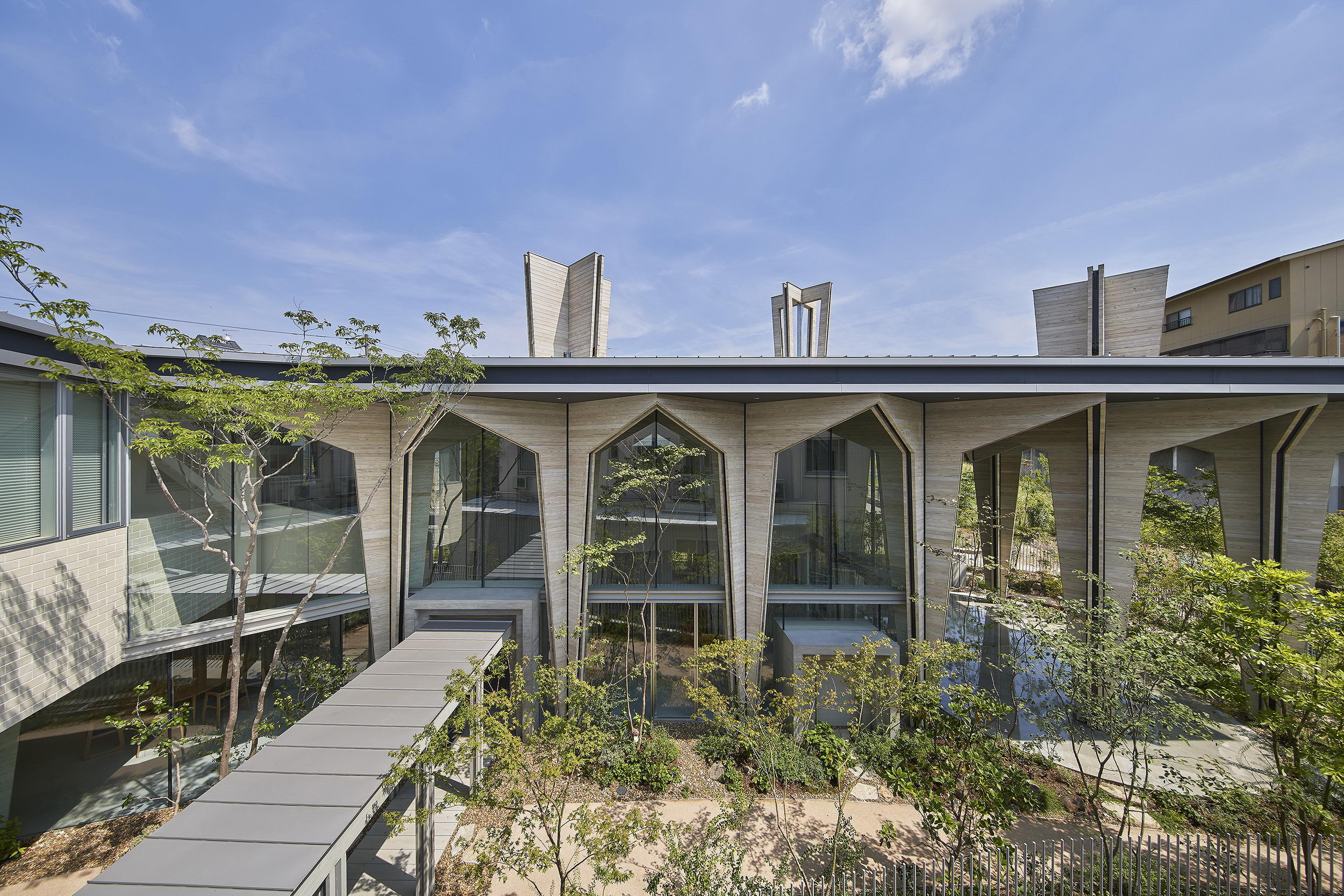

幼儿园坐落在一片宁静的景观中,周围环绕着古老的乡间小路,水道,农田和山脚下的房屋。幼儿园共包含主托儿所,多功能空间,鞋帽间等几个空间,它们彼此相邻,但设计师并未过多考虑它们如何相互作用和协调彼此,然而,看似矛盾的空间似乎具有良好的平衡。旧建筑和新建筑的结合,这在其他通常为"废旧和建造"的学校中并不常见,但却为孩子们创造了一个舒适的环境。
The nursery is located in a peaceful landscape, surrounded by old countryroads, water channels, farmlands, and some houses near the foot of a mountain.On the nursery premises there are several buildings – the main nursery, amultipurpose space, a shoes storage, and so on – that are all located next toeach other without much consideration for how they interact and harmonize withone another, yet, paradoxica lly, seem to have a good balance. The combinationof older and newer buildings - which is uncommon at other schools that areusually “scrap and build” - can create a comforting environment.
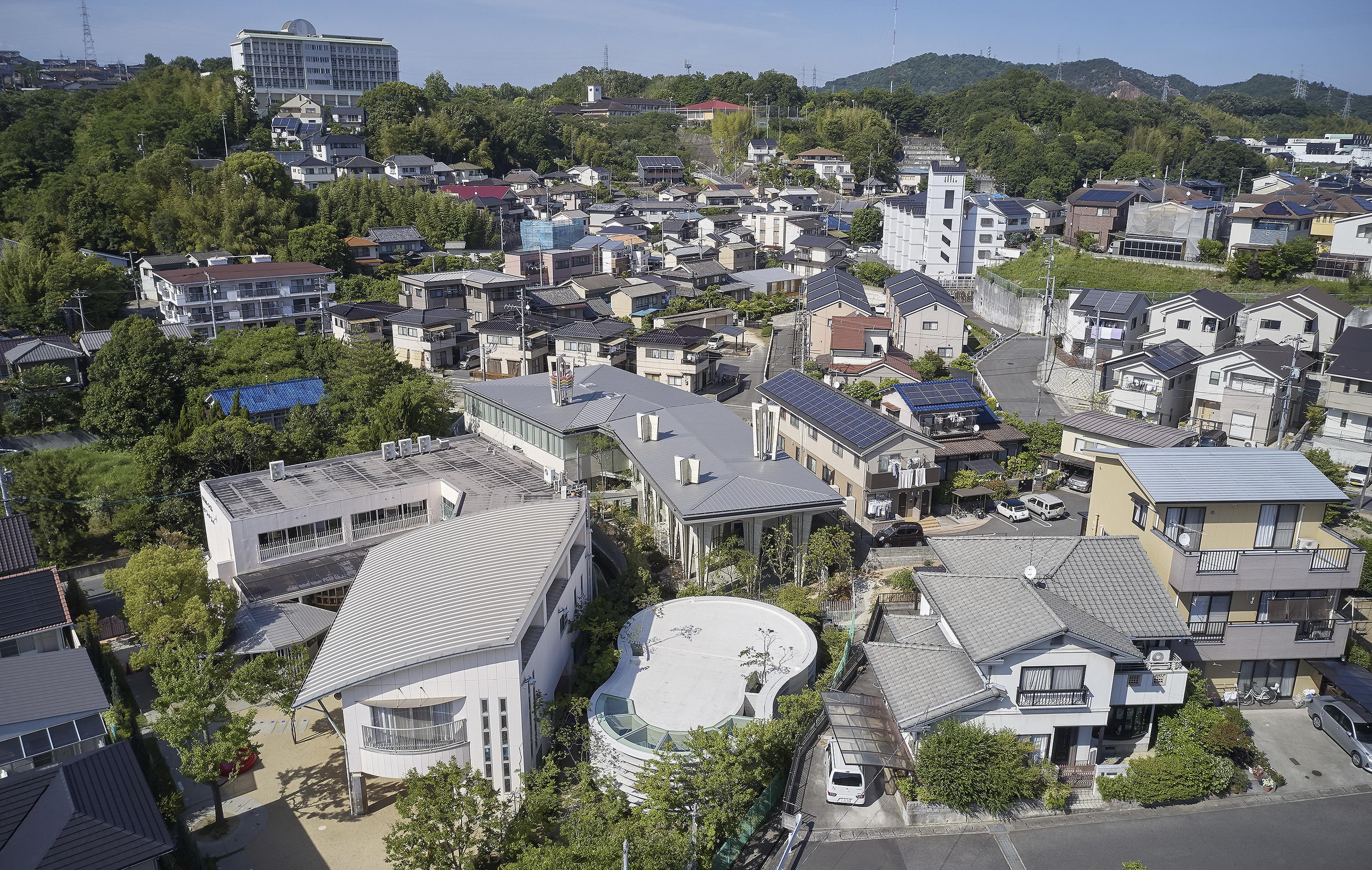

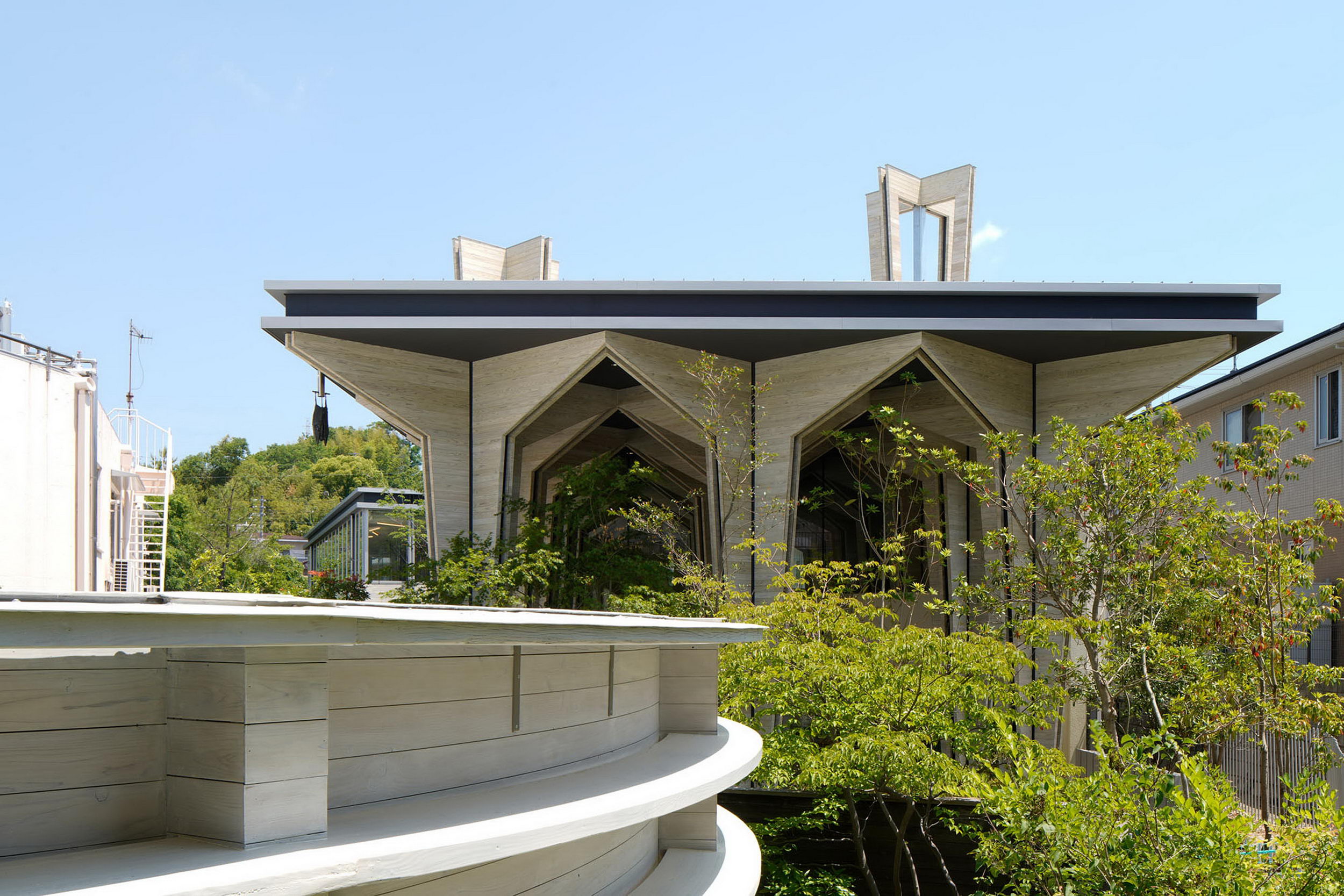
设计在此项目中并没有使用类似场地其他建筑的设计,而是受到启发,设计了一个逐步展开的总体形态。新的幼儿园延续了多年来建造的田园式幼儿园设计,并使其与社区及其周围环境建立更具活力和互动性的关系。
For this project, instead of designing something similar tothe remaining buildings on the premises, I was inspired to design a gradualunfolding master plan. Within the village-esque nursery that has been builtover the years, stories have continued to be woven, and will create a moredynamic and interactive relationship with the neighborhood and itssurroundings.

活力森林DynamicForest-esque Place
该项目是在幼儿园的儿童人数增加,以及需要旧食堂设备老化后启动的。不仅要求团队设计一个食堂,而并且需要挑战重新捕捉饮食空间的基本特征。因此,设计师并未局限于设计一个普通的聚集式用餐空间,而是旨在创造一个"互动环境",让父母和邻居也聚在一起吃午饭,举办生日派对和其他活动。该建筑由三个空间组成:一个可容纳40名幼儿,父母和工作人员的餐厅,两间教室供4岁和5岁的孩子使用,还有一个休息室,供教职人员在下班后放松身心。
This project was initiated after an increase in the numberof toddlers at the nursery and the need to replace the aging equipment in theold dining hall. Not only did it require me to design a dining hall, but alsochallenged me to recapture the essential features of an eating space.Therefore, instead of designing an ordinary cafeteria where people gathersimply to eat, I aimed to create “an interactive environment” where parents andneighbors get together for lunch, birthday parties and other events. Thebuilding consists of three spaces: a dining hall for 40 toddlers, parents andstaff; two classrooms for 4 and 5 year olds; and a lounge for the staff torelax after work.
▽用餐空间

新建的餐厅并没有成为一个多种用途的开放式空间。相反,该建筑通过柱与梁优化了结构、秩序及建筑强度。设计中包含了许多细节,其中十字横梁和柱子在靠近天花板的位置逐渐变宽,它们以3.5米的间隙排布、旋转45度,最终形成建筑的主体结构柱网。
For the dining hall, I deliberately avoided designing anopen empty space that could be used in multiple ways. Rather, I added structureand order through the use of columns and beams, which add architecturalstrength. The details of the design include the arrangement of cross-shapedbeams and columns that widen towards the ceiling. They are arranged in a gridlayout at 3.5 meter intervals and rotated 45 degrees.
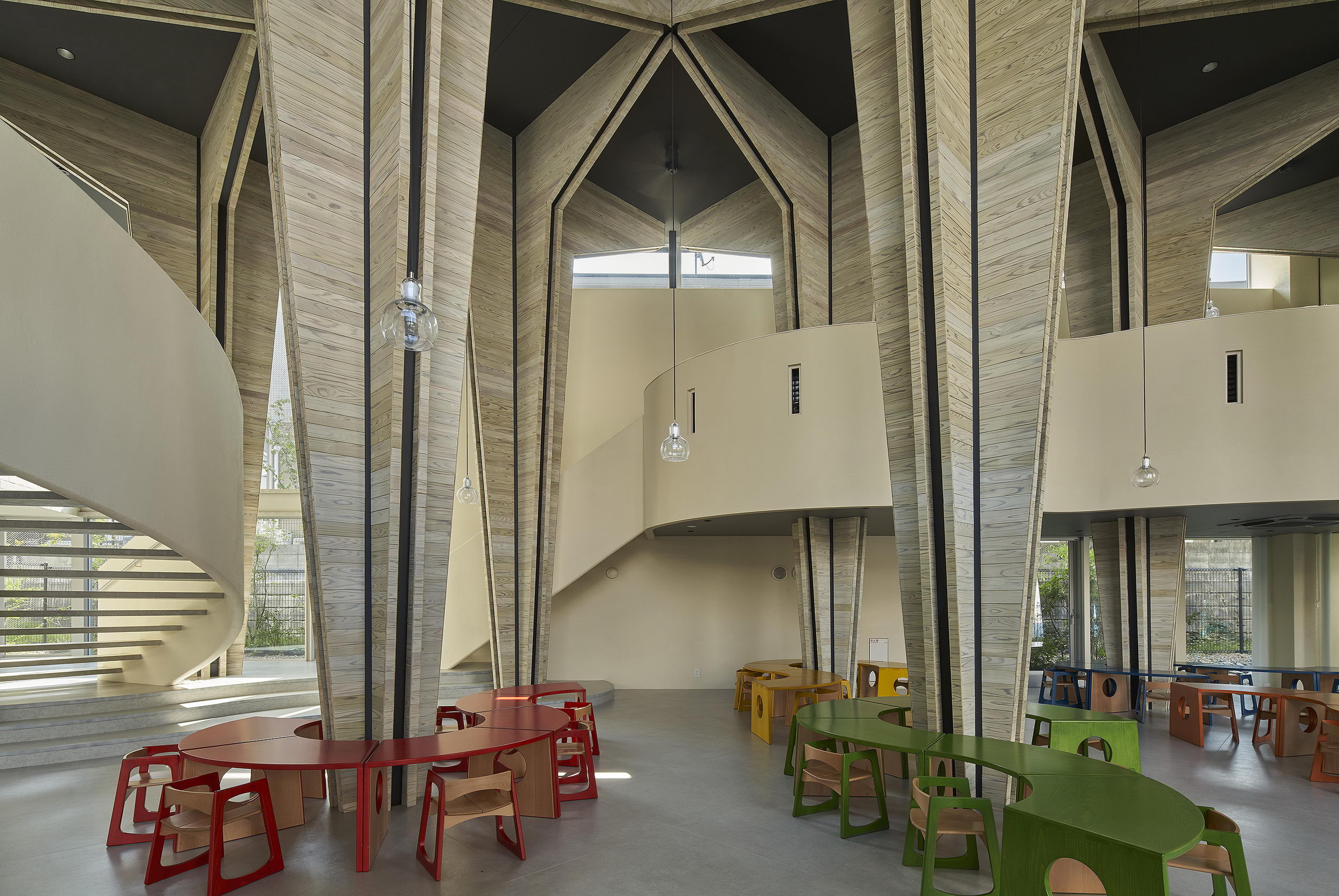
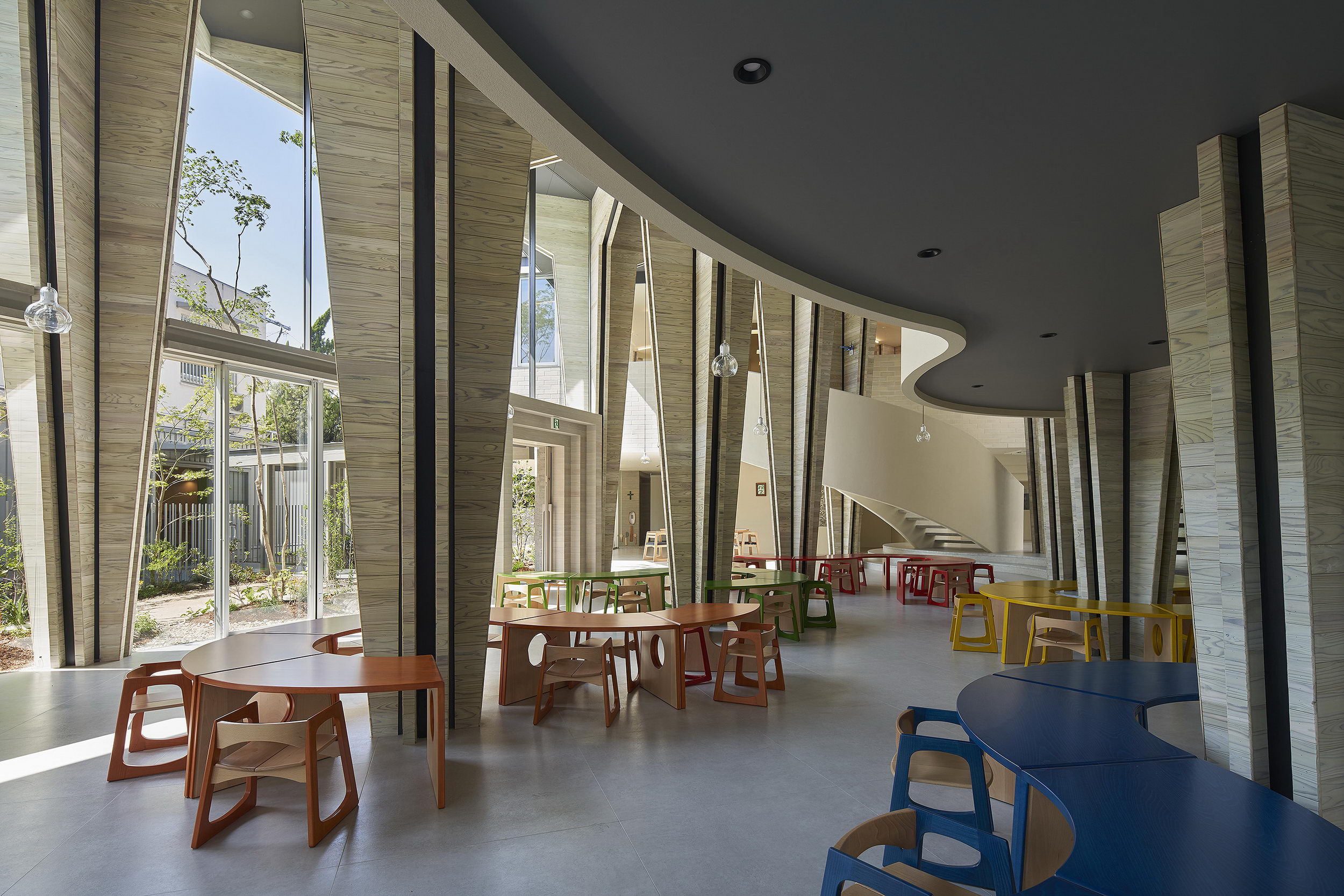

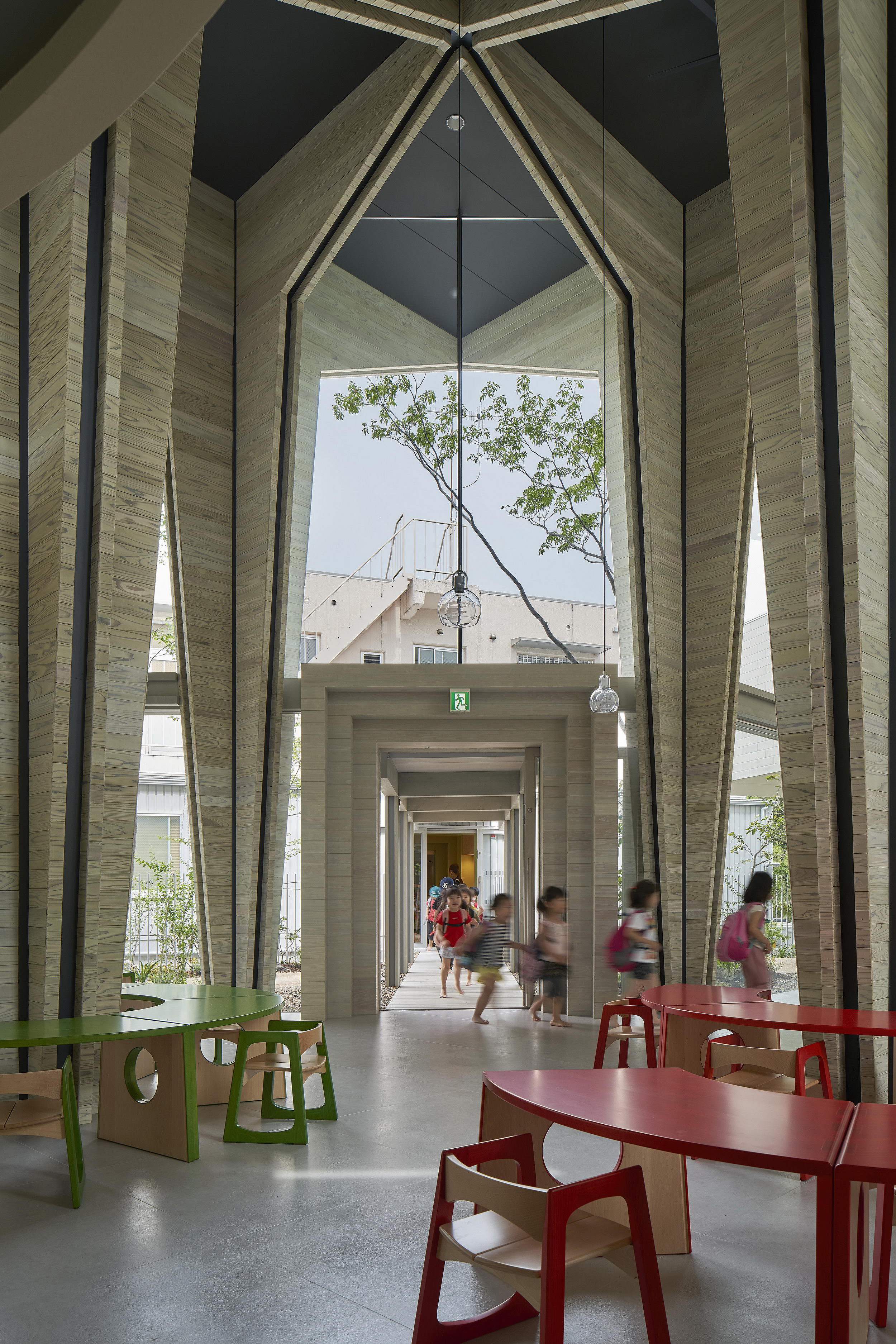
建筑通过水平和垂直方向的视线锚点,营造了室内渐进的深度感,从而在感官上建立起一定的物理距离感。同时,建筑师通过家具和景观的设计,创造了室外和室内空间的无缝过渡,并构筑了一种如同流动的森林般的环境,让人们可以在其中漫步。
Through the use of horizontal and vertical visual anchors agradual sense of depth is created, which generates a perception of physicaldistance. Through the use of furniture andlandscape design, I created a seamless and gradual transition of the interiorspaces and outside, which engenders a flowing forest-esque environment whereone can enjoy wandering around.


▽室内空间


▽柱体设计无缝过渡的室外空间
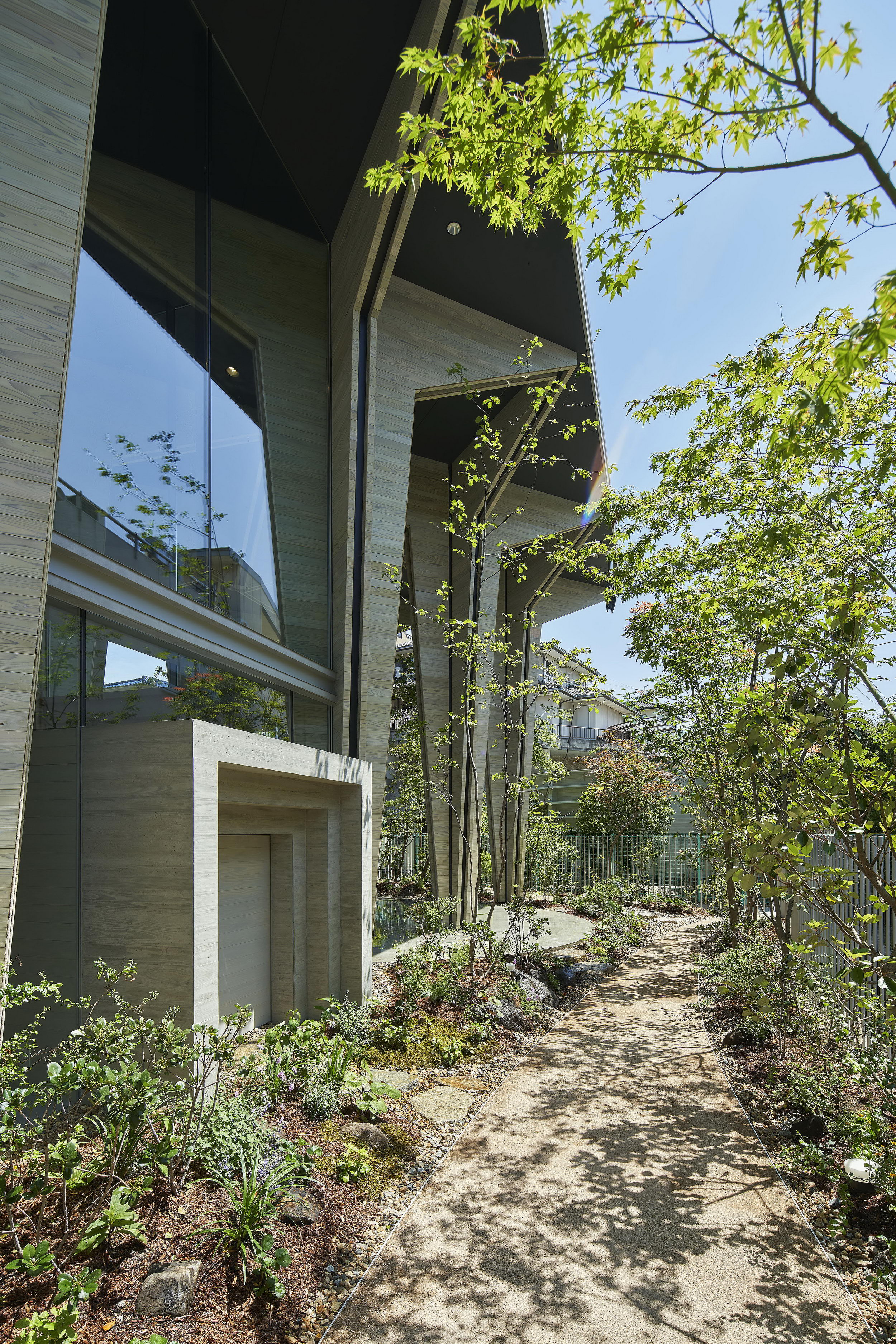


此外,由于幼儿与成人对空间的感知方式不同,因此每个人都有一种独特的方式来理解空间并与之互动。在这个结构化、但自发和流动的环境中,团队的目标是创造一个独特的空间,在这里,孩子们可以通过特殊的方式培养他们的想象力和好奇心。
In addition, since a toddler versus an adult perceive spacedifferently, there is a distinct way each understands and interacts with thespace. Within this structured, yet spontaneous and dynamic environment, I aimedto create a unique space where toddlers can cultivate their imagination andcuriosity in a special way.
▽与幼儿对比强烈的空间尺度

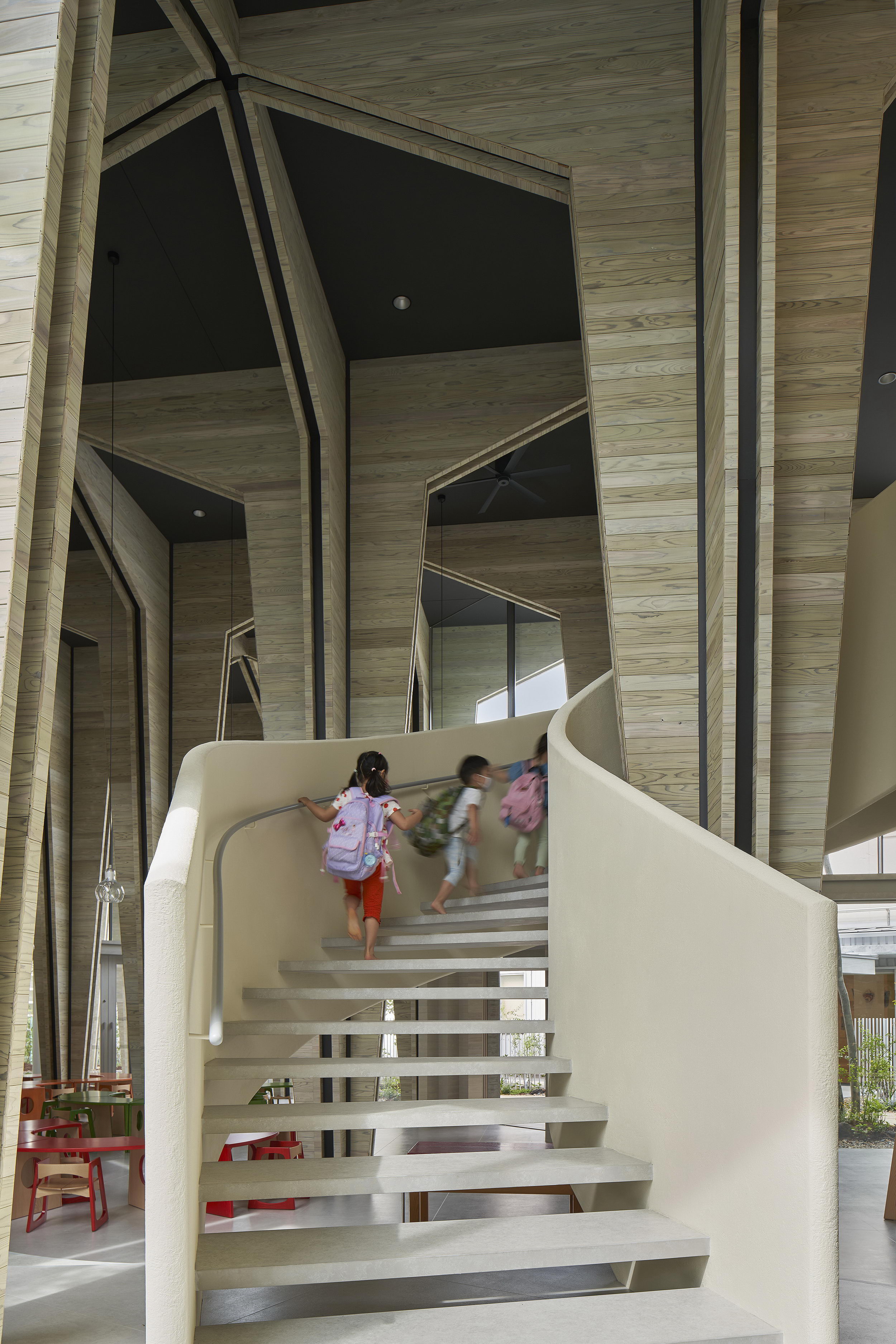
社区的未来TheFuture of the Community
筑紫幼儿园距离UID的办公室仅有5分钟的步行路程。设计师将继续思考什么样的环境对社区中的家庭,教职员和儿童有益,并为与不断变化的现代环境和谐相处继续做出努力。
Tsukushi Nursery School is located a 5 minute walk fromUID's office. I will continue to reflect on what kind of environment is ofbenefit for the families, employees, and toddlers in the community, and inharmony with the constantly changing modern environment.
▽平面图
 |  |
▽剖面图
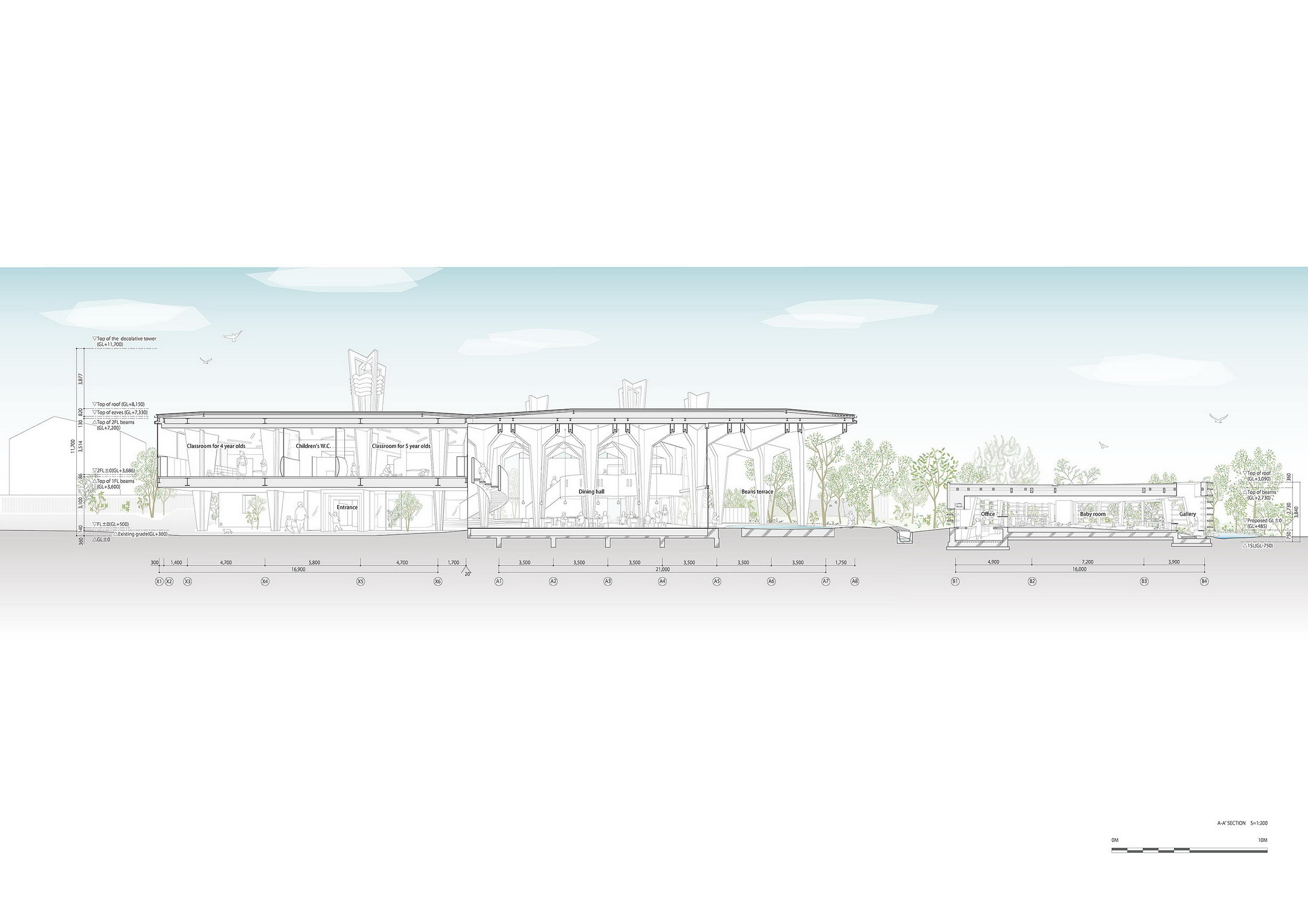

▽柱体细节
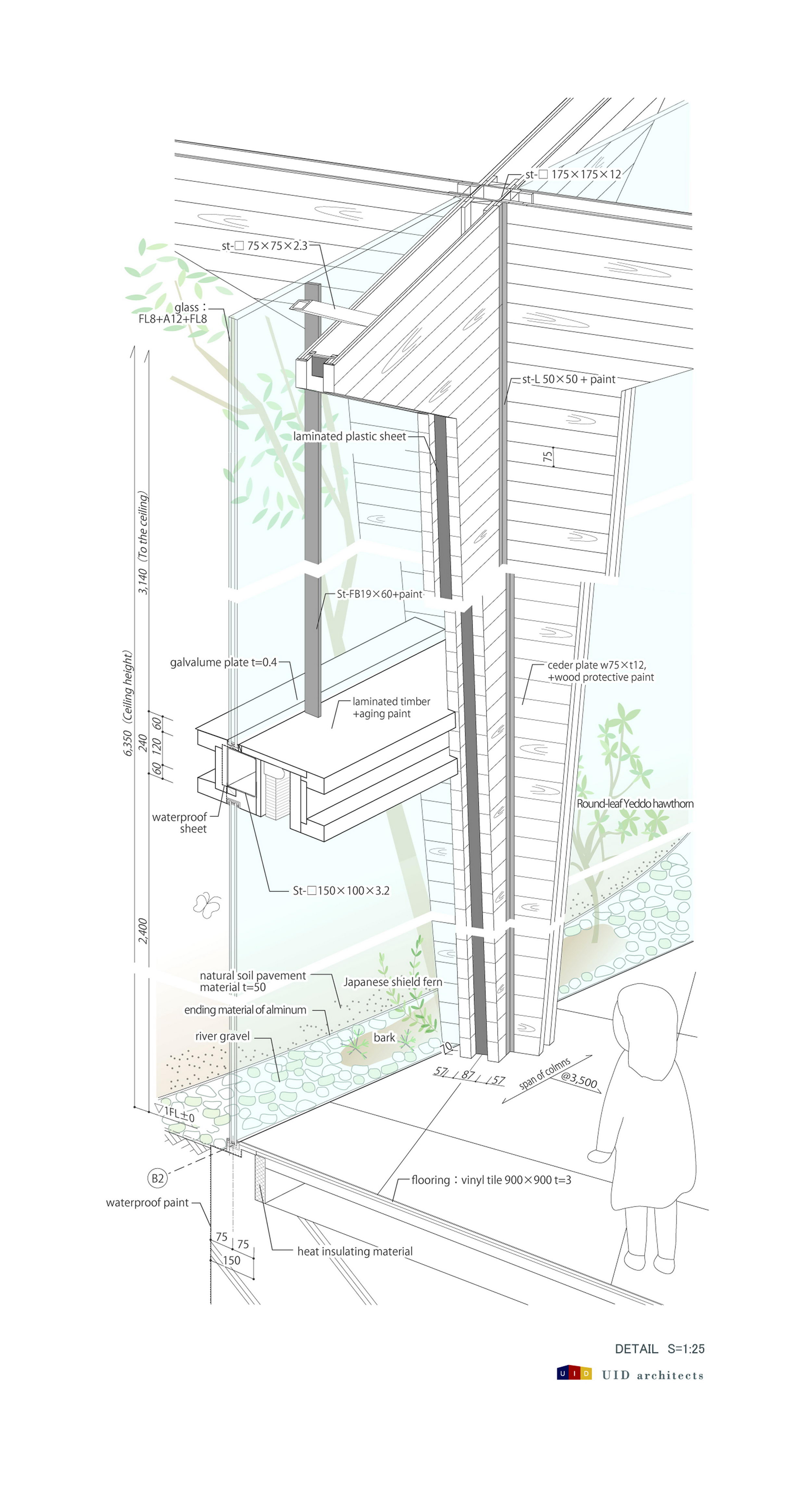
Projectname:TSUKUSHI NURSERY SCHOOL - FORESTA KARANKORO (dininghall building)
Companyname:UID
Website:http://maeda-inc.jp
Contacte-mail:uid@maeda-inc.jp
Project location:Fukuyama-City,Hiroshima, Japan
CompletionYear:2020
Buildingarea (m²):545.61㎡
Otherparticipants:Konishi Structural Engineers, structural; Toshiya Ogino LandscapeDesign, landscape
Photocredits:Koji Fujii / TOREAL